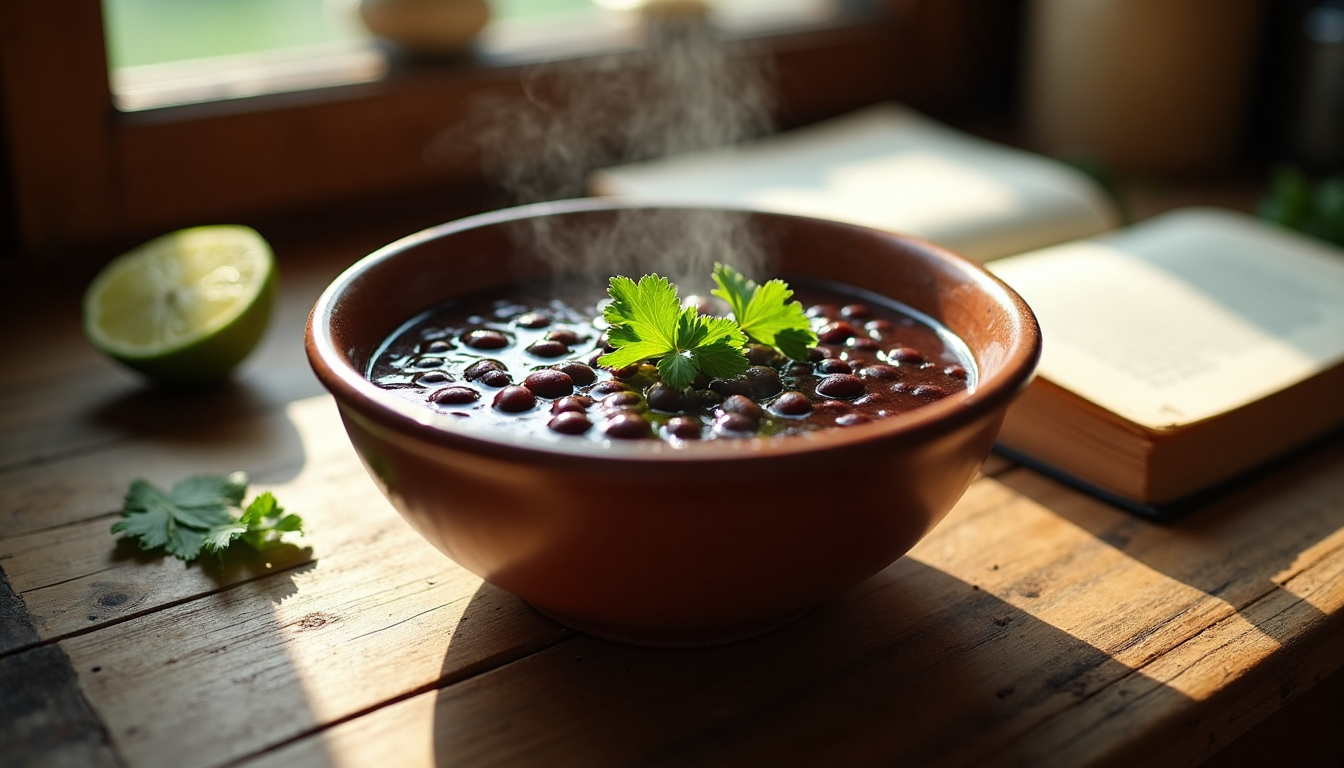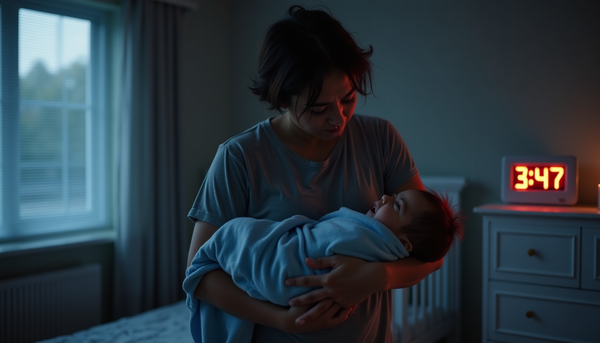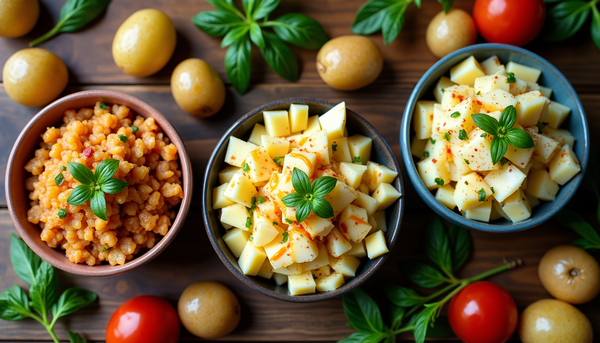Why I Stopped Following Soup Recipes (And Started Listening to My Gut Instead)

Why I Stopped Following Soup Recipes (And Started Listening to My Gut Instead)
Last Tuesday, I stood in my kitchen at 6:47 PM holding a can of black beans and feeling completely overwhelmed. My toddler was melting down because I'd run out of his favorite crackers, dinner was supposed to happen in thirteen minutes (according to the very optimistic schedule I'd written that morning), and I had exactly four ingredients that even remotely belonged together.
That's when something clicked.
Instead of frantically googling "quick dinner ideas" for the millionth time, I just... started cooking. No recipe. No plan. Just me, those black beans, and whatever was lurking in my fridge. And you know what? It was the best soup I'd made in months.
The Thing Nobody Tells You About Soup
Here's what I've realized after years of stress-cooking my way through parenthood: soup isn't just food. It's therapy. It's meditation. It's your kitchen telling you exactly what your body needs, if you're willing to listen.
But somewhere along the way, we've convinced ourselves that cooking requires perfect measurements and flawless execution. (Spoiler alert: it absolutely doesn't.)
The truth is, our grandmothers didn't have Pinterest boards full of 47-ingredient soup recipes. They had instincts. They understood that soup is basically vegetables + liquid + whatever makes you feel good. And they were onto something.
Why Black Bean Soup Became My Gateway Drug
Black bean soup was the recipe that taught me how to cook without a net. It's basically impossible to mess up (trust me, I've tried), it's ridiculously forgiving, and it tastes like a warm hug when you need one most.
Plus, it's packed with protein, fiber, and all those nutrients that make you feel like you've got your life together. Which, let's be honest, is half the battle some days.
The version I'm sharing isn't really a "recipe" in the traditional sense. It's more like... guidelines? A framework? Think of it as soup training wheels for your intuitive cooking journey.
The "Trust Your Gut" Method
Before we dive in, let me share the mindset shift that changed everything for me: your taste buds are smarter than any cookbook.
When you're making soup, you're not following orders. You're having a conversation. With your ingredients, with your senses, with that little voice that says "needs more lime" or "maybe some heat would be nice here."
This approach has saved my sanity more times than I can count. No more panic when I'm missing an ingredient. No more feeling like a failure when I accidentally double the garlic (which, by the way, is never actually a problem).
My Go-To Black Bean Soup Framework
What You'll Probably Need:
- 2 tablespoons olive oil (or whatever cooking fat you have)
- 1 onion, diced (or half an onion, or two shallots, or honestly just garlic powder if that's all you've got)
- 1 carrot, diced (optional but adds sweetness)
- 1 bell pepper, any color (also optional)
- 4-5 cloves garlic, minced (or more, because life's too short)
- Spices: cumin, chili powder, chipotle powder (start with a teaspoon each, adjust from there)
- 4 cans black beans, drained and rinsed
- 1 can diced tomatoes (fire-roasted if you're feeling fancy)
- 2 cups vegetable broth (or chicken broth, or just water with some bouillon)
- 1 lime
- Salt and pepper to taste
The Method:
Step 1: Build Your Base Heat the oil in your biggest pot. Add the onion (and carrot and bell pepper if you're using them). Cook until everything smells amazing and looks slightly golden. This usually takes about 6-8 minutes, but honestly? Just go by smell and sound. When it stops sizzling aggressively and starts smelling sweet, you're good.
Add the garlic and spices. Stir constantly for about a minute. Your kitchen should smell like a Mexican restaurant at this point.
Step 2: Add the Good Stuff Dump in the black beans, tomatoes, and broth. Bring everything to a boil, then reduce heat and let it simmer.
Here's where the magic happens: taste it. Does it need more spice? Add more. Too thick? Pour in some water. Not flavorful enough? Maybe it needs salt, or more lime, or just five more minutes of simmering.
Step 3: The Texture Game This is my favorite part. Take about a cup of the soup (beans and all) and blend it until smooth. Stir it back into the pot. This gives you that perfect combination of creamy and chunky that makes soup feel substantial.
Want it smoother? Blend more. Want it chunkier? Blend less. Want to skip this step entirely because your blender is dirty and you can't even? That's fine too. The soup police aren't coming.
Step 4: The Lime Revelation Add lime juice gradually, tasting as you go. Start with a tablespoon. The soup should brighten up and suddenly taste more... complete? Like all the flavors just decided to be friends.
This is where you season with salt and pepper. Don't be shy about the salt - beans need more than you think.
When Things Go "Wrong" (Spoiler: They're Usually Fine)
Let me address some of the "disasters" I've had with this soup, and why they actually weren't disasters at all:
Too spicy: Add more beans (canned or leftover from another meal), more broth, or a dollop of sour cream when serving. Or just embrace it and call it "warming."
Too bland: More salt, more lime, more spices. Sometimes I add a splash of apple cider vinegar or even hot sauce. Taste and adjust until it makes you happy.
Too thick: Add liquid. Water works. Broth is fancier. Wine is fun if you have it open.
Too thin: Simmer uncovered for a while, or blend more of it, or just serve it over rice. Problem solved.
Burned the bottom: This happened to me last month. I just carefully transferred everything to a new pot, leaving the burned bits behind. Nobody knew except me (and now you).
The Toppings Situation
Here's where you can really make this soup your own. I usually put out little bowls of:
- Chopped cilantro (even though my husband thinks it tastes like soap)
- Diced avocado
- Shredded cheese (cheddar, cotija, whatever's in the fridge)
- Diced red onion
- Sour cream or Greek yogurt
- Hot sauce
- Crushed tortilla chips
Let everyone build their own bowl. It feels fancy and cuts down on complaints about "too much cilantro" or whatever.
The Real Recipe: Trusting Yourself
The thing is, this isn't really about black bean soup. It's about learning to trust yourself in the kitchen. About understanding that cooking is supposed to nourish you, not stress you out.
Every time I make this soup, it's slightly different. Sometimes I add corn because I found a bag in the freezer. Sometimes I throw in leftover rice to make it heartier. Once I added coffee because I'd read somewhere that it enhances the smoky flavors (verdict: weird but not bad).
The point is, there's no soup referee. No one's grading your technique. There's just you, your ingredients, and the simple goal of making something warm and satisfying.
Your Turn to Experiment
I want to challenge you to try this approach. Not just with soup, but with cooking in general. Start paying attention to how things smell, how they look, how they make you feel.
Maybe your version will have sweet potatoes because that's what you love. Maybe you'll make it with white beans because that's what's on sale. Maybe you'll add spinach at the end because you're trying to sneak more vegetables into your life.
All of these choices are right. Because here's the secret that took me way too long to learn: the best recipe is the one that works for your life, your family, your preferences, and your Tuesday evening energy level.
Questions for Fellow Soup Experimenters
I'm curious about your soup journeys. What's your go-to comfort soup when everything feels chaotic? Have you ever had a total cooking disaster that somehow turned out amazing? Do you have any family soup traditions I should steal?
And for those of you who are still intimidated by recipe-free cooking: what's holding you back? What would make you feel more confident about trusting your instincts in the kitchen?
Drop your thoughts in the comments. I read every single one, and I love hearing about your kitchen adventures (and misadventures).
PS: This soup freezes beautifully, makes excellent leftovers, and somehow tastes even better the next day. Just saying.
PPS: If you try this approach and it doesn't work out perfectly the first time, that's normal. Cooking intuition is like a muscle - it gets stronger with practice. Be patient with yourself.




